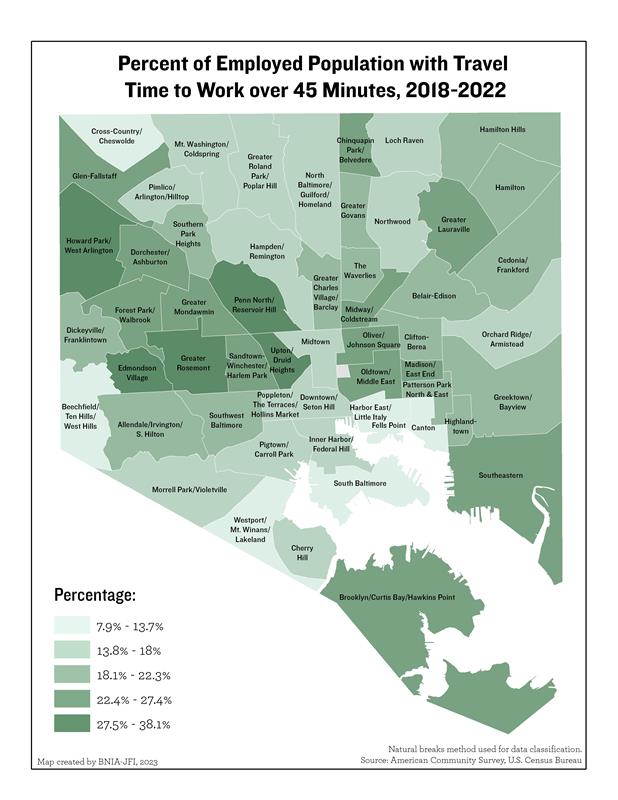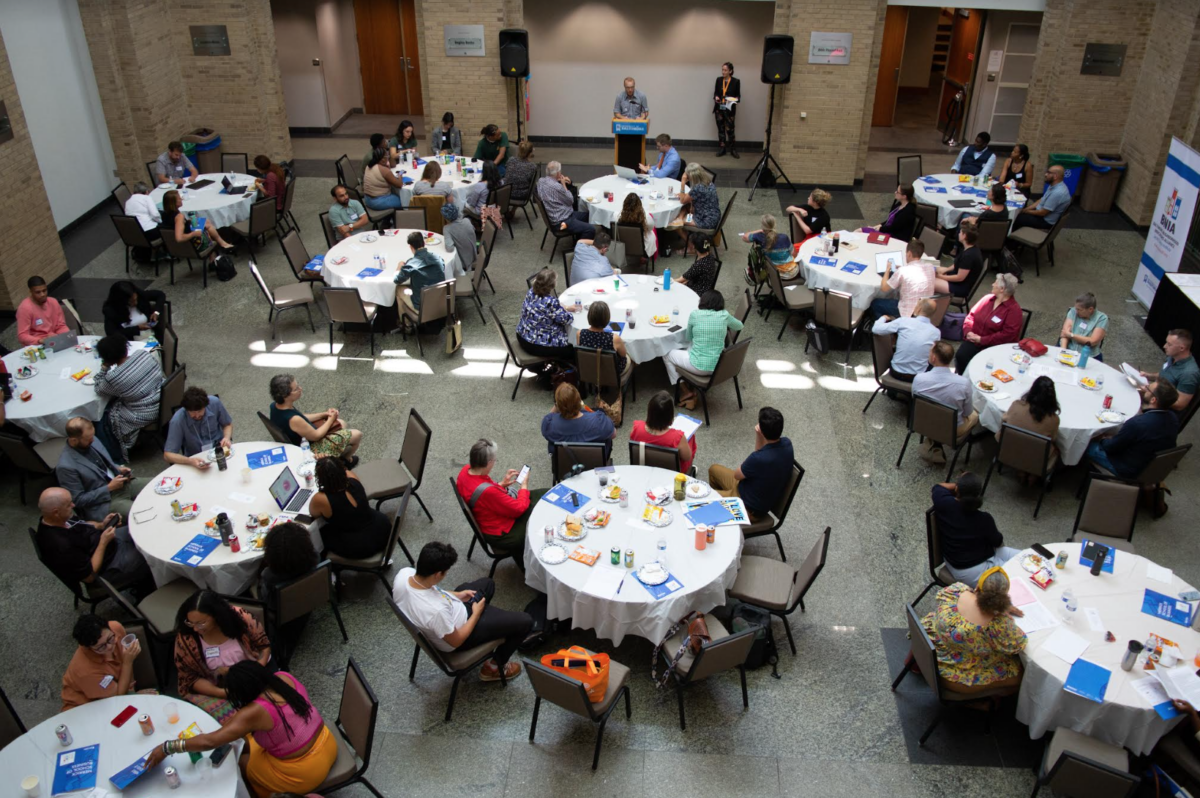For more than two decades, the Baltimore Neighborhood Indicators Alliance-Jacob France Institute (BNIA-JFI) has been responsible for monitoring changes in Baltimore’s neighborhoods and quality of life. As part of that endeavor, the organization plans to draw on its recurring events and reports — and a new app — to bring local communities into its process of researching them.
Amanda Phillips de Lucas has been the director of the University of Baltimore-affiliated institute since March 2023. She told Technical.ly that her work at the Cary Institute of Ecosystem Studies, along with her prior tech-focused doctoral research and dissertation on West Baltimore highway building activism, inspired her to pursue her role with BNIA-JFI.
Phillips de Lucas told Technical.ly that her predecessor Seema Iyer focused on giving communities tools as an urban and regional planner. Today, Phillips de Lucas has a different focus.
“I’m really interested in both how communities use data, but also kind of the gaps that exist in our data collection systems,” de Lucas said.
In its over 20-year history, BNIA-JFI has played a role in enhancing the city’s open data portal and organized annual events like Baltimore Data Day, which expanded into Baltimore Data Week in 2020. It’s anticipated to return to a single-day event this year on July 19.
“It is a space where people who never interact in Baltimore get to come together and talk about not only data but about projects that they’re really interested in [and] passionate about,” said Phillips de Lucas.
What BNIA-JFI says about 2024 census data
By the time Baltimore Data Day arrives this summer, BNIA-JFI will have already published its latest annual Vital Signs report, which provides insights into neighborhood conditions. Unlike the Decennial Census of Population and Housing, which occurs every 10 years to determine each state’s representation in the US House of Representatives, or microdata from the census, such as what was reported this March, BNIA-JFI’s data is not politically motivated.
“The census is always political,” said Phillips de Lucas. “Counting is a very political act one way or another.”
BNIA-JFI’s Vital Signs report, which Phillips de Lucas said pairs well with the 21st Century Cities Initiative’s Baltimore Area Survey, examines Baltimore-specific data. This includes the effects of vacant lot restoration on adolescent health through initiatives like Project VITAL, a collaboration between BNIA-JFI and the Johns Hopkins Bloomberg School of Public Health.
Like the census, locally sourced data resulting from partnerships with communities and researchers also has its own gaps and limitations.
“I often don’t think gaps in data are intentional,” said Phillips de Lucas. “But what I do think is we have a system that rewards a lot of different actors to sort of manage things really independently.”
Variability is just a fact of life when it comes to data, according to Phillips de Lucas. She pointed out that gaps are not uncommon when examining community environmental data nationally or in Baltimore. Phillips de Lucas explained that while Baltimore experienced significant population loss overall and an undercount of children by 10.9%, certain areas, like Downtown, saw substantial population growth between the two censuses.

BNIA-JFI transit commute map. (Courtesy)
“Growth in the white L versus the Black Butterfly,” Phillips de Lucas said.
However, due to the diversity in neighborhood sizes, she believes that comparisons of neighborhoods are not so straightforward. To address this, BNIA-JFI uses a compilation of sources to inform how it reports at the community statistical level. BNIA-JFI information is sourced from American Community Survey 5-Year Data, the Baltimore Police Department for crime statistics, city and state health departments, and other sources such as library card registrations and block party permits.
Phillips de Lucas said that no population loss is good, but that gaps in data might stem from people just being stretched after that pandemic.
“We haven’t been able to get some data from providers just due to capacity,” she said.
A new platform to promote community-involved data collection
Currently, the alliance is collaborating with the University of Maryland and the Central Maryland Transportation Alliance to deploy the Balto app. The platform, which was built prior to Phillips de Lucas’ tenure, is aimed at improving transit data collection and understanding commuter experiences. Phillips de Lucas, who lives in Northeast Baltimore and takes the 54 or the Pink buses depending on the day, said the app was developed through community engagement.
The app will serve as a survey mechanism to gather feedback on ride quality, time spent commuting and related factors. While initially available only for Android phones, efforts are underway to make the app more widely accessible. Despite challenges\ such as navigating the constraints of the Apple App Store, the project aims to provide valuable insights into Baltimore’s transit system and address areas for improvement.
Visit the Google Play store to Download the Balto App

This story is a part of Technical.ly’s Thriving Tech Communities Month. See the full 2024 editorial calendar.
Before you go...
Please consider supporting Technical.ly to keep our independent journalism strong. Unlike most business-focused media outlets, we don’t have a paywall. Instead, we count on your personal and organizational support.
Join our growing Slack community
Join 5,000 tech professionals and entrepreneurs in our community Slack today!

The person charged in the UnitedHealthcare CEO shooting had a ton of tech connections

From rejection to innovation: How I built a tool to beat AI hiring algorithms at their own game

Where are the country’s most vibrant tech and startup communities?



